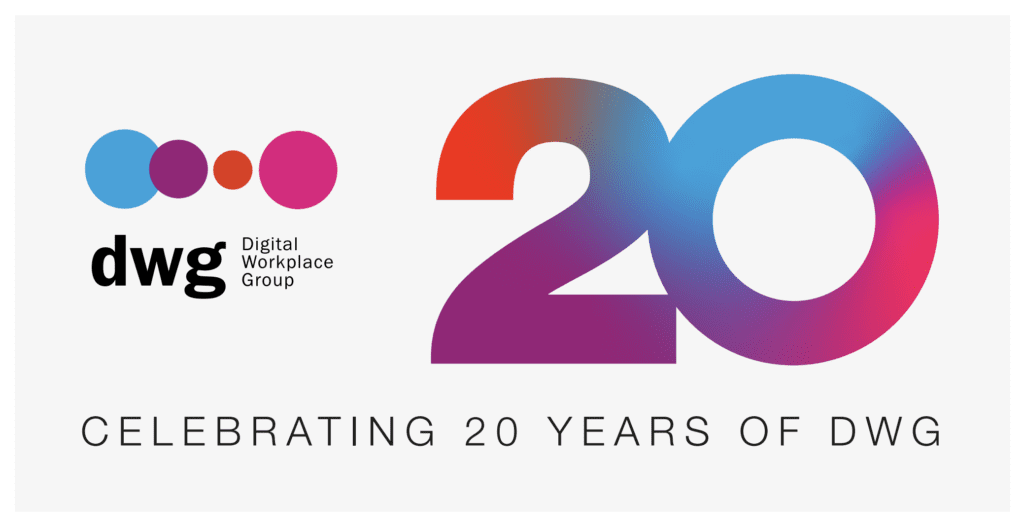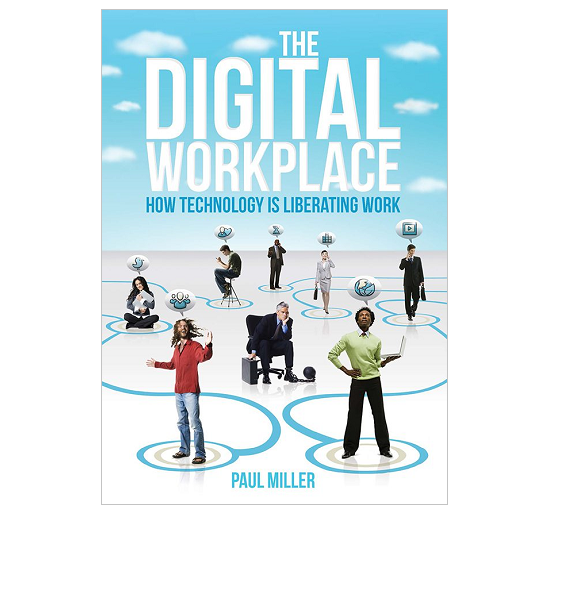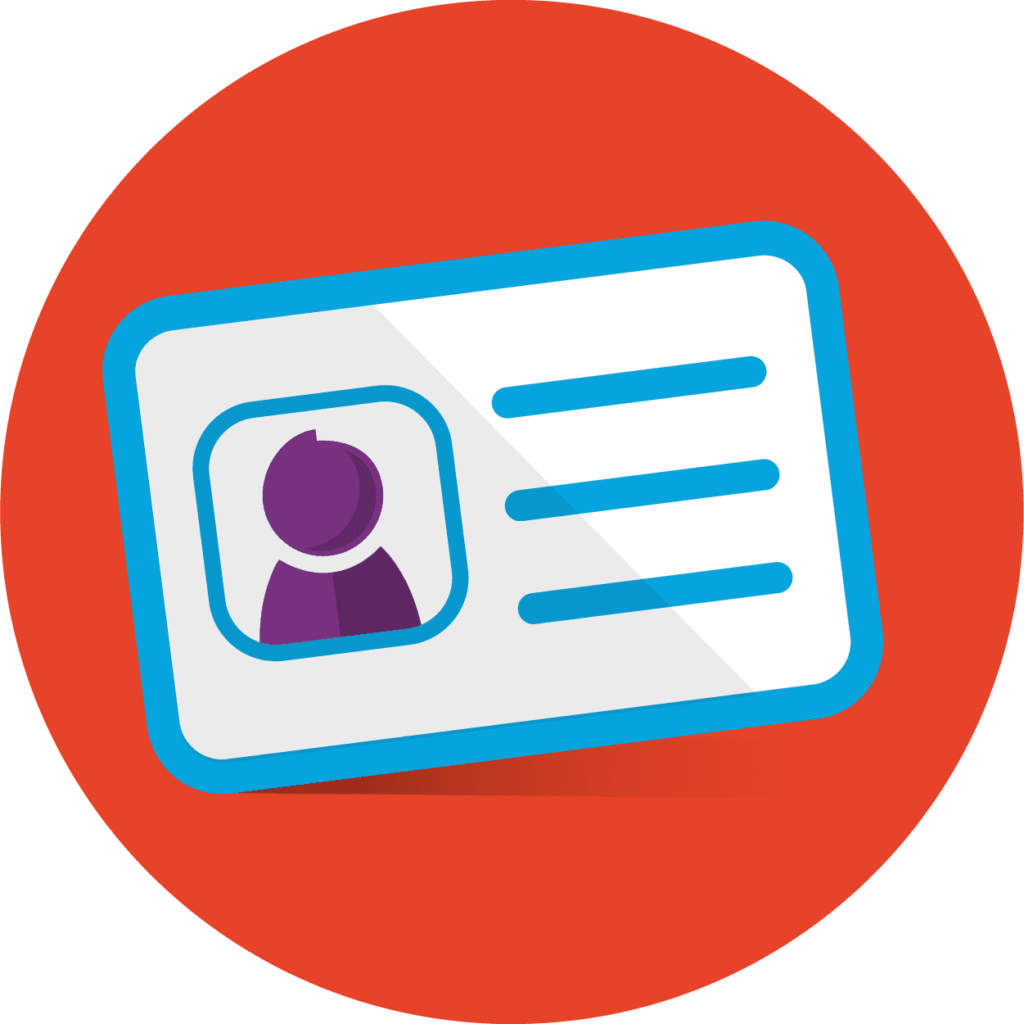20 years of DWG: a 20-year timeline of the digital workplace
Can it really be 20 years? Here we are in 2022 and it feels as if the digital workplace and intranets have always been with us. However, in terms of workplace technology, the digital workplace is still relatively immature. And back in 2002 it wasn’t even a term that was used.
There are, of course, many other happenings that are not included below, but here’s my view of a 20-year timeline of the digital workplace.
2002 The Intranet Benchmarking Forum is born


The year it all began. The Empowerment Group (TEG), led by Paul Miller, created the Intranet Benchmarking Forum (IBF) to benchmark intranets and create a community of intranet professionals. IBF launched in June with a meeting held at the British Library in London with eight founding members. In those days, Paul ran IBF with four employees from an office in his garden in London. Twenty years on, DWG is a fully virtual organization with members and clients around the world. While Paul moved out of London a long time ago, he does still have an office (now doubling as a podcast studio) in his garden.
2003 First Agile conference takes place

Fast forward to 2022 and Agile methodologies have had a huge impact on the delivery of digital workplace projects, but also a significant influence on how we manage the digital workplace overall. Big waterfall projects are out and more iterative steps driven by user feedback are in. This more agile mindset is also driving continuous improvement across content, findability and more, and helping to deliver a more user-centric digital workplace. Agile has its roots in a meeting of like-minded software developers that took place in 2000, leading to an Agile Manifesto being drawn up in 2001. However, the first Agile conference in the US in 2003 is arguably the moment when the movement really started to pick up speed.
2004 Facebook forms

Technology and digital experiences in the consumer world have heavily influenced workplace technology. Innovations and trends, such as social media, usually end up in one form or another in the digital workplace. The establishment of Facebook in 2004 has had a profound impact on how we experience technology and undoubtedly influenced the introduction of social networking and related features into the digital workplace. It’s strange to think that the creation of IBF actually predates the foundation of Facebook.
2005 Google launches personalized searching

The search should work a bit more like Google. Just as Facebook has influenced social collaboration and interaction in the digital workplace, Google has had a very direct impact on our experience of intranet and enterprise search. It has also shaped the expectations of users. In 2005, Google launched personalized search – another milestone in a string of innovative moves that also includes universal search (2007), type-ahead searching (2010), feedback on searches (2011), and more – all features that have found their way into the digital workplace in one way or another.
2006 Release of SharePoint 2007

SharePoint remains to this day the base technology for many of the world’s leading intranets and digital workplaces. Love it or hate it, the history of intranets and SharePoint are intertwined. We could have picked any of the major years in the evolution of SharePoint – such as the first proper release in 2003 or SharePoint 2010 – but we’ve gone for the release of SharePoint 2007, which really helped to accelerate SharePoint’s rise to powering intranets around the globe.
2007 The first iPhone

Smartphones have changed the way we live as well as the way we work. They have transformed our relationship with technology, how we consume information, how we complete transactions, and much more. In 2007, Apple released the first iPhone – and the rest is history.
2008 Yammer first launched

In 2008, the team behind an archaeology site called Geni created a tool for communicating internally, eventually launching it commercially as a standalone product called Yammer. In 2012, this was bought by Microsoft and has become a staple of many digital workplaces today. Social collaboration remains a key part of the digital workplace and the evolution and success of Yammer has definitely had an influence.
2009 DWG starts to use the term ‘digital workplace’ at scale

The exact point when the term ‘digital workplace’ was first used is not clear but, by 2009, Paul Miller and other DWG-ers were starting to use the term more frequently to describe the wider digital ecosystem that was increasingly coming into the view of intranet teams. Other pioneers, such as Jane McConnell, were also popularizing the term. By the end of 2009, the DWG research programme had announced it was going to release its ‘Digital Workplace Maturity Model’ the following year.
2010 Office 365 announced

In October 2010, Microsoft announced Office 365 and launched it in private beta. Twelve years later, Office 365 and Microsoft 365 are powering many of the digital workplaces of the world’s largest companies.
2011 IBM Watson competes on Jeopardy

Today, artificial intelligence (AI) and machine learning (ML) are commonplace across the digital workplace and within its constituent tools, but back in 2011 AI still had a whiff of science fiction about it. In 2011, the super-computer IBM Watson defeated the champions on Jeopardy, a US TV quiz game, demonstrating the power of AI. While this was perhaps more of a publicity stunt than anything else, it attracted a lot of attention and showcased the future potential of AI.
2012 Paul Miller’s book ‘The Digital Workplace’ is published

While the term ‘digital workplace’ was increasing in use, there was still some confusion about what it actually meant. In 2012, Paul Miller published his book The Digital Workplace: How technology Is liberating work, which explored the ins and outs of the digital workplace, and how it was impacting the world of work. Many of the ideas in the book still stand up today.
2013 Wearable tech comes on the scene

To date, wearable tech such as smart watches have not had a deep impact on the digital workplace, except perhaps in very specific use cases, for example around health and safety within some industries. But it may well be that wearable tech will become a digital staple within a few years. With that possibility, 2013 may be marked as the year when wearable tech first emerged on the scene. Smartwatches became available to consumers early in the year via a Kickstarter project; and Google Glass was also released – but unfortunately nobody wanted to wear them…
2014 IBF becomes DWG


By 2014 our members were focusing not just on their intranets but increasingly on the wider portfolio of workplace tools, apps and platforms that employees were using every day. Recognizing this focus and the growing use of the term ‘digital workplace’, in February IBF formally changed its name to Digital Workplace Group. We are now DWG.
2015 Gartner starts to use the term ‘digital workplace’

The term ‘digital workplace’ was also picking up wider usage across the industry and technology world. Perhaps most significantly, the highly respected US technology analyst and research house Gartner began using it in 2014 and 2015. The digital workplace had truly arrived and was starting to enter the mainstream.
2016 Workplace from Facebook is launched

Recognizing that many organizations were successfully launching enterprise social networks (ESNs), which were often explained internally to employees as a ‘sort of Facebook for the business’, Facebook themselves sensed an opportunity. Workplace, an internal, enterprise version of Facebook, with essentially the same tools as the consumer version, was developed and launched in London. Although arguably it hasn’t taken off as anticipated, it has certainly had a deep impact on some individual organizations.
2017 Launch of Microsoft Teams

It started off as a rival to Slack and an alternative to SharePoint team sites, evolved to become a unified communications platform, and now it’s an entry point to the entire digital workplace. The success of Microsoft Teams has been nothing short of remarkable, with high levels of adoption that then went stratospheric during the pandemic. Five years on, Teams is still going strong and continues to evolve.
2018 GDPR comes into play

In 2018, many customer experience and digital workplace teams around the world were re-engineering their processes, rewriting their terms of usage, and taking a close look at their systems to meet the terms of the EU’s General Data Protection Regulation (GDPR) that had come into effect. Perhaps, arguably, the greatest impact of GDPR on the digital workplace has been to change the mindset towards data privacy, ensuring that employee data is safeguarded.
2019 More than 50% of the global population can access the internet

In 2019, large sections of the world were still not connected to the internet – but things were improving. According to Mary Meeker’s annual set of internet trends, for the first time more than half the global population could access the internet. This mirrors trends in increasing access to intranets and digital workplaces, which traditionally frontline employees had not been able to access. In 2019, across DWG members, on average 94% of employees had intranet access.
2020 The coronavirus pandemic accelerates the digital workplace

There is no doubt that the pandemic has had a massive impact on the evolution of the digital workplace, scaling up remote work to unprecedented levels, and establishing communication and collaboration platforms like Microsoft Teams as critical to business continuity. The continuation of remote and hybrid work at scale looks like we may never quite return to the ‘before times’ where working in the office was the dominant pattern and remote working was somewhat frowned upon.
2021 Facebook announce the metaverse

In 2021, Facebook rebranded to Meta and announced it was building the metaverse – a sort of 3D world in which we all be able to interact. Originally announced internally at Facebook in 2018, the metaverse divides opinion. Is it the next version of the internet and the future of work? Or is it a huge slab of Zuckerberg-driven folly, a diversionary tactic or Second Life on steroids? Or somewhere in between? However the metaverse evolves, it seems likely that mixed reality experiences will become far more prevalent in the digital workplace over the coming years.
2022 Twenty years of DWG

And so we’re up to date and DWG is celebrating its 20th birthday! What will the next 20 years bring? Watch this space – as the digital workplace will, for sure, continue to evolve and grow over the coming years.

Talk to us about…
… becoming a DWG memberMore about DWG Membership » |
Categorised in: About DWG


